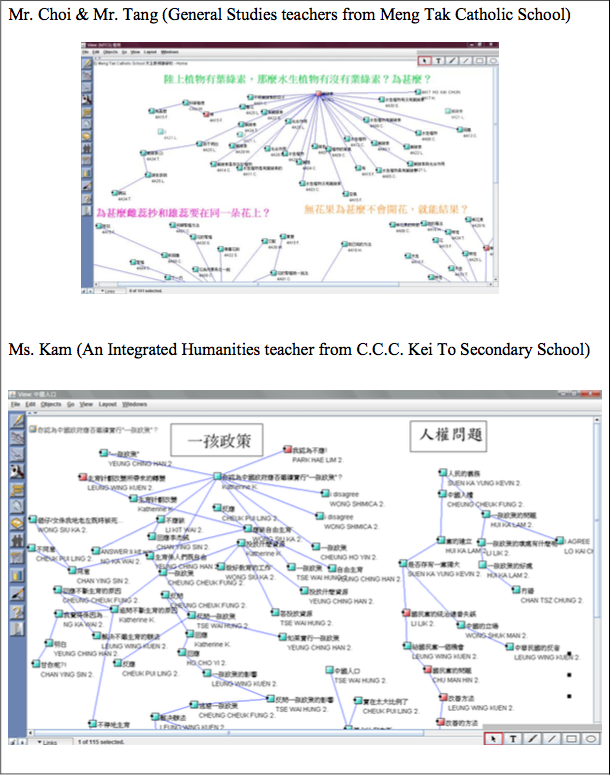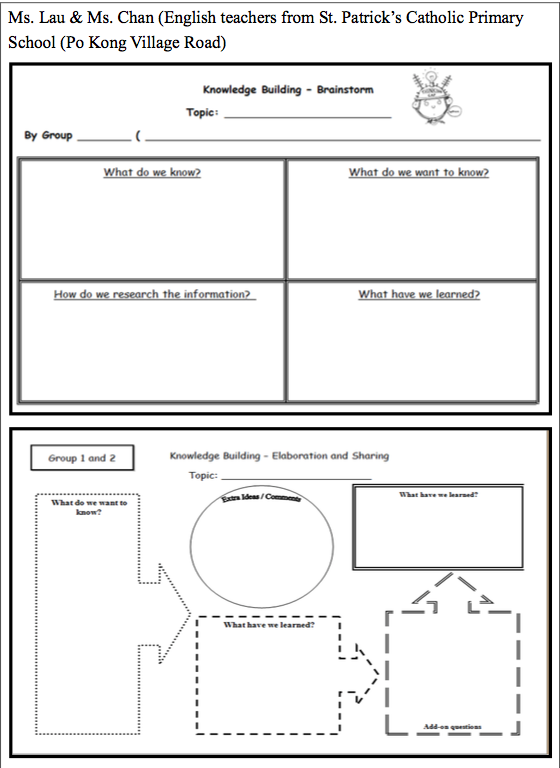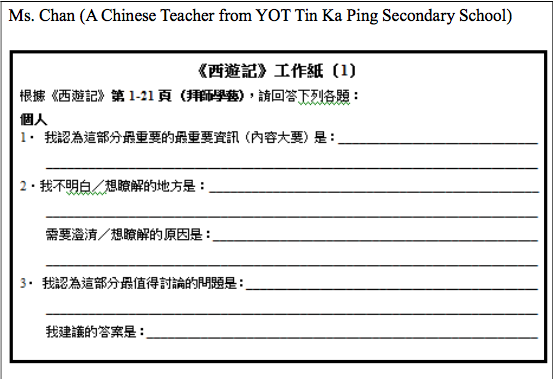How to develop a collaborative learning culture in the classroom
From Teacher Talk to Student Discussion and Inquiry
Page Outline
Background and General Considerations- Understanding students’ prior knowledge
- Making use of groups
- Facilitating initial inquiry
- Step 1: Provide information to stimulate students’ thinking on the problem
- Step 2: Scaffold students’ group inquire a. Using think cards or worksheets with probes and scaffolds b. Reciprocal teaching c. Other instructional methods
- Step 3: Make ideas public on the Knowledge Building Wall a. Using big posters b. Using post-it notes
- Step 4: Facilitate students to choose questions for discussion and inquiry on Knowledge Forum
Background and General Considerations
1. Understanding students’ prior knowledge
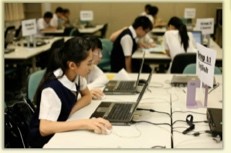
2. Making use of groups
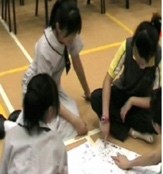
3. Facilitating initial inquiry

Developing KB classroom
The aim of classroom knowledge building activities is to develop a positive „discussion, sharing and inquiry culture‟ among students in which they feel „psychologically safe‟ to risk voicing half-baked ideas, building on and critiquing each others‟ views. It prepares students with the proper attitudes and skills to be adopted in later inquiry and discussion on Knowledge Forum.
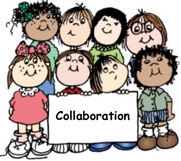
Teaching Strategies (Principles and Four-Step Procedures)
Step 1: Provide information to stimulate students' thinking on the problem Information can be provided in terms of:
 Short presentations by students on the information they gathered in the initial task;
Short presentations by students on the information they gathered in the initial task;- A short talk by the teacher on the problem/issue;
- Presentations of other materials such as video clips, newspaper articles, readings, survey reports, photos and comics.
- Experience from firsthand activities, e.g. field trips, visits, games.
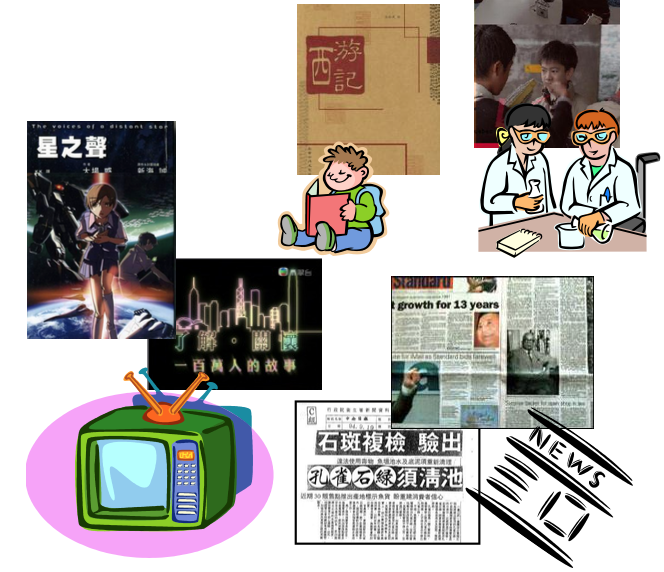
Step 2: Scaffold students’ group inquiry
After the presentation of stimuli, students should engage in group inquiry, which can be facilitated by a number of strategies, the following are some examples:
a. Using think cards or worksheets with probes
Think cards and worksheet may include the following probes:
- KWL – “What I know”, “ What I want to know” & “What I learned”
- "I need to understand"
- "New learning"
- "My idea"/ “My theory”
- “My evidence is” / “How to explain this?”
- “How does it work?”
- “How is it possible?”
- “I agree”
- “I disagree”
- “Putting ideas together”
- “How could this be better?”
b. Reciprocal Teaching (相互教學) It is a teaching technique developed base on constructivist theories to promote comprehension and thinking skills. There are four strategies for reciprocal teaching, namely "Question", "Summarize", "Clarify" and "Predict". Teachers first demonstrate to students how to use these four strategies through a discussion with the students. Afterwards, students take turns to role-play as the little teacher of the group to lead the discussion. The strategies are briefly explained below:
- Question – students generate questions about the key concepts of the reading
- Summarize – students use their own words to express the main ideas of the content
- Clarify – students try to solve the difficult problems they encountered during reading, e.g. clarifying the meaning of the words and concepts
- Predict – based on prior knowledge and known information, students make predictions of the later part of the reading content and decide on the direction of further reading
c. Other instructional methods
- Think-Pair-Share
- Jigsaw learning
- Concept mapping
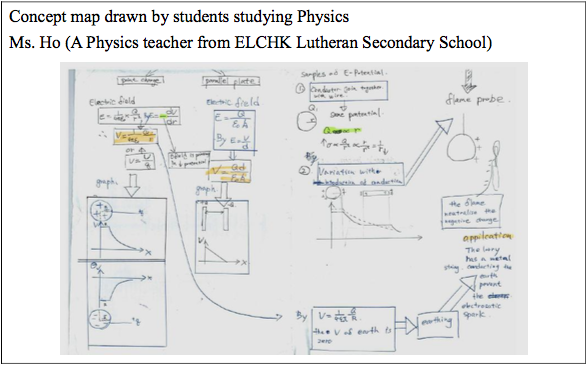 Demonstration Video 1
Demonstration Video 2
Demonstration Video 3
Demonstration Video 1
Demonstration Video 2
Demonstration Video 3
Step 3: Make ideas public on the Knowledge Building Wall
After discussion, students should have formulated their own ideas and some questions for further inquiry. They should be asked to share their work with the whole class with the use of Knowledge Building Wall. This activity is similar to and prepares students for writing notes on KF.
There are two common forms of Knowledge Building Wall:
a. Using big posters

Each group can write one or several questions they want to examine most on a big poster and post it onto the board for everyone to see. Teachers may ask each group to present and explain why they think those are questions worth for inquiry.

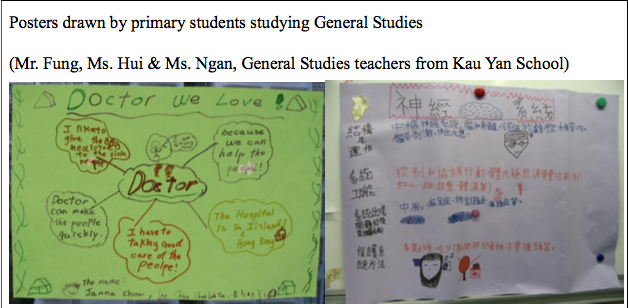
b. Using post-it notes
Knowledge Building cannot be learnt in one single lesson. Knowledge Building should be experienced continuously, if it is to bring changes to students‟ way of learning. To provide students with KB experience in everyday learning, teachers may consider assigning one of the classroom notice boards as the permanent “Knowledge-Building Wall”, on which students are encouraged to write about their opinions on certain issues regularly and give feedbacks or question other classmates‟ ideas, thereby simulating a KF discussion.
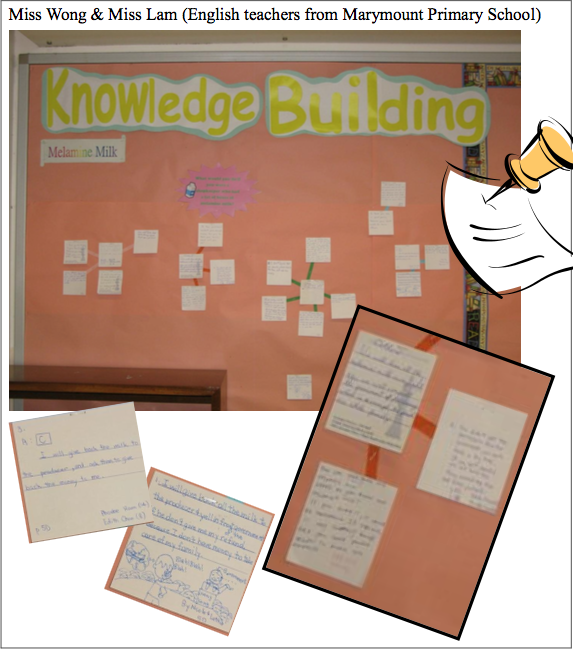
Step 4: Facilitate students to choose questions for discussion and inquiry on Knowledge Forum
Teachers facilitate students to distinguish which are good students‟ questions for inquiry. Good questions usually…
- Do not ask for descriptive or factual information and Do not have a clear and simple answer
- Are Broad, ill-structured and multifaceted
- Are Embedded with various concepts and values related to the curriculum (big ideas)
- Are Authentic and related to daily life
- Can arouse students‟ interest
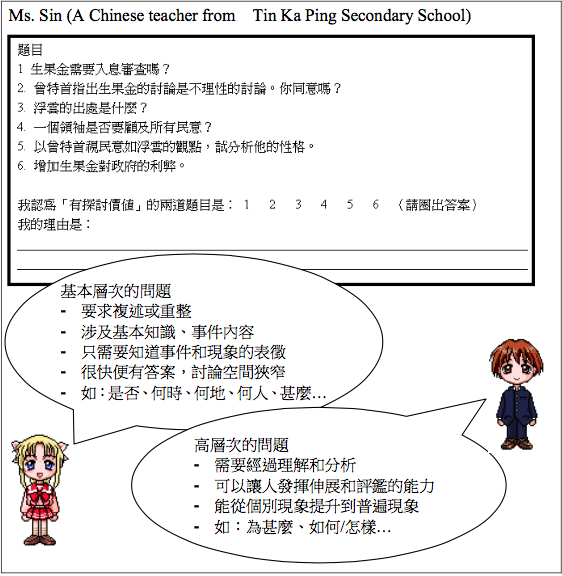
Students then discuss and decide on the inquiry questions. Although questions emerge from students, teachers can facilitate in ways so that these questions still relate to key curriculum concepts. One way to achieve this, is by facilitating students to categorize these questions into several key areas for further discussion on Knowledge Forum.
